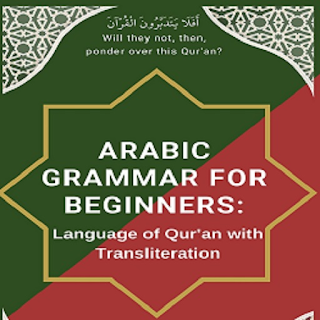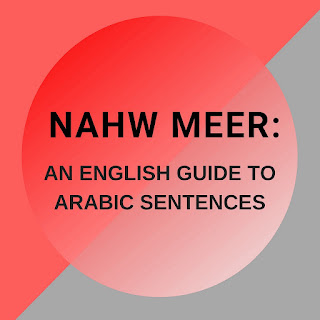1.1/1.2/1.3 - Alphabets/Vowels
Section 1.1 - Arabic Alphabets اَلْأَبْجَدِيَةُ الْعْرَبِيَّةُ
Trans-literation key
|
Harakah
|
Harakah name |
Transliteration alphabets |
|
َ |
Fathah |
a as in ha |
|
ِ |
Kasrah |
i as in sin |
|
ُ |
Dammah |
u as in uno |
|
ً |
Tanween Fathah |
an as in undo |
|
ٍ |
Tanween kasrah |
in as in sin |
|
ٌ |
Tanween dammah |
un as in uno |
|
اْ |
Alif/hamzah |
aa |
|
وْ |
waaw |
oo |
|
يْ |
yaa |
ee |
|
ْ |
Saakin/Jazm |
‘ |
|
عُلْ/اُلْ |
ul |
For ا ul as in full/ For ع 'ul and 'u are pronounced from the back of the throat |
|
اَلْ/عَلْ |
al |
For ا al as in hull/ For ع 'al and 'a are pronounced from the back of the throat |
|
اِلْ/عِلْ |
il |
For ا il as in fill/ For ع 'il and 'i are pronounced from the back of the throat |
This section is being provided as a revision only. It is assumed that you know how to read Arabic. If you do not, it is required that you work with a teacher to learn to read and, if you wish, to write. This book is for learning classical/Qur’anic Arabic Grammar.
The first thing to note in Arabic is that it is written from right to left. Arabic has 28 alphabets. These are from right to left:
Table 1 - Arabic Alphabets
|
خ |
ح |
ج |
ث |
ت |
ب |
ا |
|
Khaa |
Haa |
jeem |
Thaa |
Taa |
Baa |
Alif |
|
ص |
ش |
س |
ز |
ر |
ذ |
د |
|
Saad |
Sheen |
Seen |
Zayn |
Raa |
dhaal |
Daal |
|
ق |
ف |
غ |
ع |
ظ |
ط |
ض |
|
Qaaf |
Faa |
Ghayn |
‘Ayn |
Zaa |
Taw |
Daad |
|
ي
|
و |
ه |
ن |
م |
ل |
ك |
|
Yaa |
Waaw |
Haa |
Noon |
Meem |
Laam |
Kaaf |
Besides, another alphabet which is ء Hamzah, is sometimes counted, and the total number of alphabets is counted as 29. Hamzah is the consonant version of the alphabet Alif ا.
Alphabets are divided into two categories. They are Sun alphabets اَلشَّمْسِيْ ash-Shamsi, and Moon alphabets اَلْقَمَرِيْ al-Qamari. This division is because of how they are pronounced when the alphabets ا Alif and ل Laam are in front of them. For example, al-Shamsi is read as ash-Shamsi, and al-Qamari is read as written al-Qamari.
Section 1.2 – Sun and Moon Alphabets حُرُوْفُ اَلشَّمْسِيْ/حُرُوْفُ الْقَمَرِيْ hu-roo-fus-Sham-si/huroo-ful Qama-ri
(1) Sun Alphabets حُرُوْفُ الشَّمْسِيْ huroof-ush-Shamsi:
There are 14 Sun alphabets. These are:
|
س |
ز |
ر |
ذ |
د |
ث |
ت |
|
Seen |
Zaa |
Raa |
Dhaal |
Dal |
Tha |
Ta |
|
ن |
ل |
ظ |
ط |
ض |
ص |
ش |
|
Noon |
Laam |
Zaw |
Taw |
Dod |
Sod |
Sheen |
Examples:
التَّوْرَاةَ pronounced as at-taurata, and not al-taurat. The Torah
الثَّوَابِ pronounced as as-thawaab, not al-thawaab. The reward
النَّاسُ pronounced as an-naas, not al-naas. The people
الضَّلَالَةَ pronounced as ad-dalaalah not as al-dalaalah misguidance
الرَّحْمَنِ pronounced as ar-Rahman, not as al-Rahman
الصَّلَاةَ pronounced as as-salaah not, as al-salaah
(2) Moon Alphabets الْقَمَرِيْ حُرُوْفُ huroof-ul-Qamari
The remaining all alphabets are Moon alphabets.
Examples:
الْكِتَابِ pronounced as al-kitaab, the book
الْحَمْدُ pronounced as al-hamd, all the praises
الْبَرْقُ pronounced as al-barq, the lightening
الْمَلَائِكَةِ pronounced as al-malaikah, the angels
الْعَلِيمُ pronounced as al-aleem, the most knowing
الْحَكِيمُ pronounced as al-hakeem, the wisest
Practice:
Do this with all alphabets by adding al. Check with a dictionary online (for example, https://www.almaany.com/) to differentiate sun and moon alphabets. Since this book has transliteration, you will get more practice going through this book.
Section 1.3 - Vowels /Hara-kaa-tun حَرَكَاتٌ
Arabic has three long vowels and three short vowels. Long Vowels are three of the alphabets ا, ي, و alif, yaa, and waaw, which act as consonants and long vowels. Short Vowels are diacritics, also called harakahs. These are described in more detail below.
All 28 alphabets in Arabic are consonants, but three are also used as vowels, as mentioned before, and are called long vowels. These are alphabets ا, ي, و alif, yaa, and waaw, used to produce long vowel sounds. These three alphabets are also called weak alphabets الْعِلَّتِ حَرُوْفُ huroof-ul ‘illati because of the dual role of being consonants and vowels. Usually, ا requires a fathah before it, ي requires a Kasrah before it, and و requires a dammah before it. There are always a few exceptions, though.
The three weak alphabets can be joined when they denote long vowels, just like consonants. The exception is weak ا. If the alif has the sign ء, this means that it is a هَمْزَةٌ hamzah-tun or hamzah. The hamzah is the consonant Form of an alif.
If the alif is not carrying the sign of hamzah, then it must be a long vowel except when it occurs as the first alphabet in a word. In that case, the alif is a hamzah consonant. This type of hamzah is pronounced only when the first sound comes out of the mouth, i.e., when you begin speaking by pronouncing that hamzah. This hamzah is called the hamza-tul Wasli, "connecting hamzah" الْوَصْلِ هَمْزَةُ. The other hamzah at the beginning of a word is called the hamza-tul Qat-‘ee disconnecting hamzah هَمْزَةُ الْقطْعِ which is always pronounced.
A single alif can never denote a long vowel when it is the first alphabet of a word. Therefore, there is no Arabic word that begins with a long-vowel-denoting alif.
The hamzah is not a weak alphabet. The weak alif is only that alif which is not the first alphabet of a word and does not carry the sign of hamzah.
The Yaa ي and Waav و have no such differentiation. Therefore, they are always called weak alphabets, whether they denote long vowels or not.
Short vowels are called Harakahs حَرَكَاْتٌ in Arabic. Long vowels are called Extended Characters الْمَدِّ أَحْرُفُ ahraful mad-di. An alphabet that is followed by a harakah is called a مُتَحَرِّكٌ حَرْفٌ harfun mutahar-rikun. An alphabet that is not followed by any vowel is called a silent alphabet سَاكِنٌ حَرْفٌ harf-un saakin-un.
Short vowels do not have any alphabets but are designated by signs. Harakahs or diacritics are represented with a short-stroke above or below the consonant, as shown below. For example, the three short vowels harakahs are:
a) dammah ضَمَّةٌ -ُ U as in Uno.
b) fathah فَتْحَةٌ - َ A as in Art.
c) kasrah كَسْرَةٌ - ِ i as in sin.
Please note that we will be using the alphabet U for dammah sound, which makes an ou sound, A for fathah, and I for kasrah in this book.
The dotted circle indicates that an alphabet exists at this location. The sign above the dotted circle is the short vowel. Also, other harakahs are used, but they do not change the direction of the sound of a word. Nevertheless, they play an essential role in pronunciation. These harakahs are:
1) Jazmun or Silent/Sukoon ْ: The Alphabet is pronounced without any vowel and has zero duration vowels. For example, the alphabet lam ل with Jazmun ْ on top لْ is pronounced as alphabet “L” in “until.” Important to note that two alphabets next to each other cannot have jazm. Otherwise, the word becomes unreadable. When this happens, there are rules to either drop or replace one jazmun with another harakah. This point will be discussed later when situations arise.
2) Standing/Vertical fathah ٰ is pronounced as stretched fathah and is used inمَقْصُوْرَةٌ اَلِفٌ Alif-un Maqsoora-tun ىٰ in place of fathah.
3) Reverse dammah - ، is used in Al-Qur’an. If a dammah is preceded by a fathah or dammah, it is written as a reverse dammah. However, it is still pronounced as a dammah.
4) آ Maddah - fathah sound with a stretch. In the Qur’an, two types are used. One is called a short maddah (small in length) with a duration of 2 seconds, and a long maddah (longer) with 4-5 seconds.
5) Tanween – There are three of these, and they are oun ( ٌ ), un ( ً ), and in ( ٍ ). These sound like the alphabet Noon ن with a Jazmun. ٌ is pronounced “un” as in uno, ً is pronounced as “un” as in sun, and ٍ is pronounced as “in” as in income. So these are essentially double dammah, double fathah, and double kasrah.
6) ّ shaddah - This replaces two of the same alphabets next to each other and is pronounced with emphasis. There is always a dammah, fathah, or kasrah on it. The alphabet is pronounced twice. For example, إِنَّ which is pronounced as inna, meaning indeed/without a doubt. Two noons were present here next to each other and were combined, and a shaddah was used.
Please note that Tajweed has a separate science and Script for Al-Qur’an. Therefore, one needs to study these fields to understand the writing and reading of Al-Qur’an better.
The three weak alphabets can also be joined when they denote long vowels, just like consonants.
i. مَقْصُوْرَةٌ اَلِفٌ Alif-un Maqsoora-tun: Alphabet ي Ya is written generally with two dots below it. It is also written as ى without the dots. In this case, it is read as Alif and is called Ya Maq-soo-rah. For example, فَتًى is pronounced Fa-tan, meaning a youth.
ii. مَمدُوْدَةٌ اَلِفٌ Alif-un Mam-doo-da-tun: Also, know that ا Alif, and ء Hamzah written together اء sometimes are also written as أ, and إ are also read as Alif with any of the Harakahs on hamzah and is called اَلِفٌ مَمدُوْدَةٌ Alif Mam-doo-da-tun. For example, سَمَاءٌ samaa-un meaning sky. Here ء hamzah has a Tanween ٌ Un on it.
iii. هَمْزَةُ الْوصْلِ Hamza-tul Wasli or Joining hamzah:
As described before, when two words are joined, and the second one has hamzah and lam in front of it, it is written but not pronounced. It is called hamzah-tul was-li.
Example: مَا اِسْمُكَ which is written as maa is-mu-ka but spoken as mas-mu-ka or mas-muk, and hamzah اِ is not pronounced.
iv. Note that harakah on the last alphabet of a sentence, a proper Noun or where the meaning of a sentence is complete, is not pronounced in spoken Arabic as a general rule.
v. For trans-literation, consistent alphabets have been used as much as possible. In addition, an attempt has been made to use commonly pronounced words as samples. The transliteration key has been mentioned at the beginning of this chapter.
***




Comments